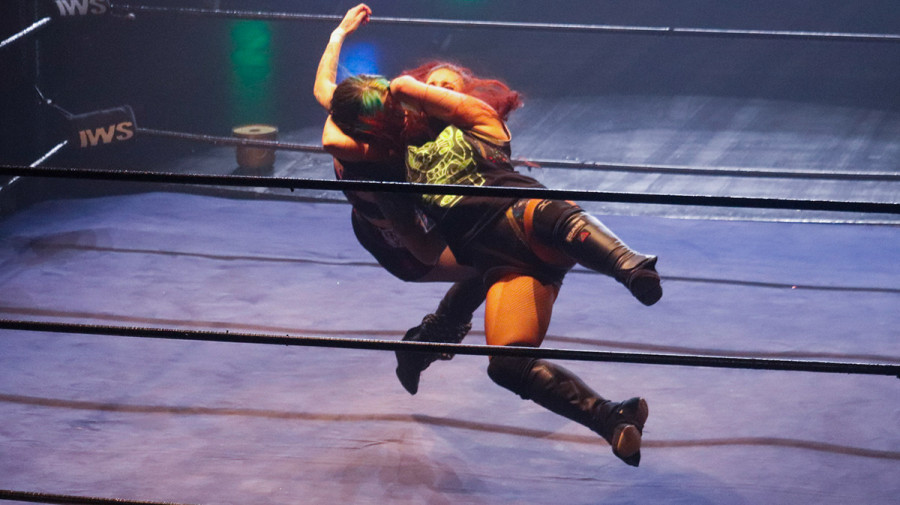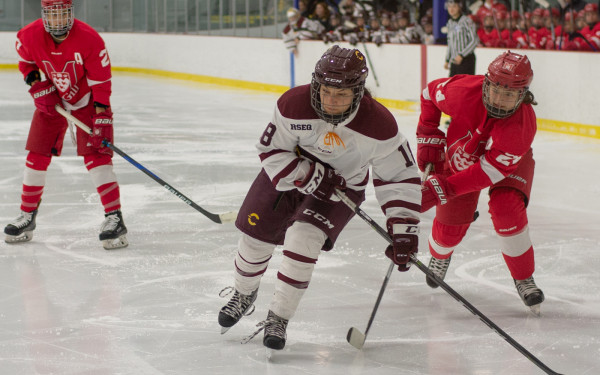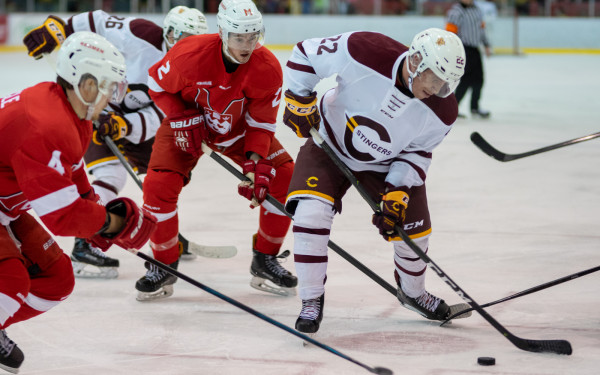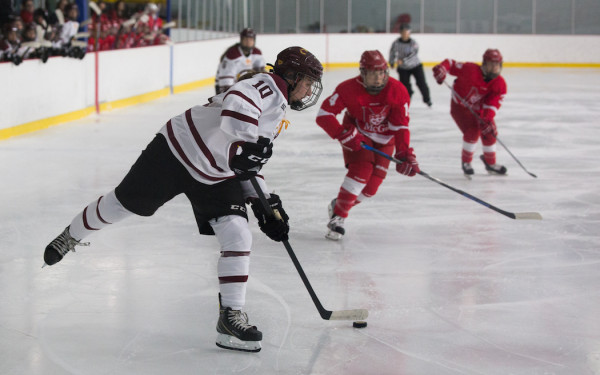International Wrestling Syndicate Strives to Make Wrestling More Inclusive
IWS Has Made Conscious Efforts to Bring Women Wrestlers to the Forefront of the Sport
International Wrestling Syndicate, a Montreal-based professional wrestling federation, is a promotion that popularized the hardcore wrestling style in Canada. This extreme form of wrestling is defined by the absence of disqualification where the use of objects, outside interventions and many moves forbidden in normal stipulation—such as low blows—are allowed.
Having pioneered concepts like “fans bring the weapons” matches and creating impressive stunts in their shows, the wrestling federation has developed a dedicated fanbase. They even train their own talents through their training school, led by professional wrestler Andrew Scott aka Professor H Shayne Hawke.
However, some people, namely women and other minority groups, had been missing or overlooked from the wrestling world for years. Since the mid-2010s, the IWS and other federations have made efforts to change this.
With a women’s championship league and a roster of women athletes, the federation is trying to train and include more and more female wrestlers in shows. This includes internationally recognized Gen Goulet known as LuFisto, one of the first women ever to be featured in hardcore matches. Female athletes who trained and debuted at IWS include Jessika Neri known as Jessika Black, Melanie Normand Fournier who goes by the wrestling name Melanie Havok and Kristara Napier-Davies known as Kristara.
Prior to this shift in wrestling culture, especially during the World Wrestling Federation’s “attitude era” of the late 1990s and early 2000s, women were included in wrestling shows but were rarely, if ever, given the opportunity to really show their skills.
“Usually the women’s match would be something called the ‘pop-corn match’ which would be the match right after intermission,” explained Neri. “So it would be the match to get people to slowly come back to their seats—it was a kind of a give-away match.”
Neri added that women were not given the platform to showcase their athleticism and their storytelling. Whereas male wrestlers were able to tell a story through their character and go through with more “hardcore” stunts and fights, women were often relegated to intermission matches and were frequently sexualized.
Napier-Davies explained this lack of freedom and storytelling kept wrestling fans who were women from fully identifying with female athletes. “I always liked the women, but I didn’t like the moves they did, and then I started to realize that it was never that they were not capable, it was that they were never given the chance to show what they really could do,” said Napier-Davies.
Neri explained that developing the storyline aspect was what made the audience start to care about what female wrestlers were doing. “I think that’s the biggest thing: it gives the same opportunity or the same playing field as the men have been having for so long without being eye-candy.”
I always liked the women, but I didn’t like the moves they did, and then I started to realize that it was never that they were not capable, it was that they were never given the chance to show what they really could do. — Kristara Napier-Davis, IWS Wrestler
“We don’t need to be eye-candy,” Neri added, “we can be showing our skills, our story-telling, our athleticism.” For Napier-Davies and Neri, this generates positive change since it brings more female models in the wrestling world. “I was like ‘I don’t want to do a bra and pantie match so I guess I can’t be a wrestler because that’s what women’s wrestling is’,” Neri said.
According to IWS Trainer Andrew Scott, having more recognized female wrestlers makes it easier to book women in shows and allows them as much complexity and leeway as their male counterparts. “In IWS, we try to give the women solid matches, book multiple women's matches, and give them storylines to work with. The only way to expand their visibility is to give them the tools to succeed,” he explained.
For Neri, an important part of this progress stems from connection with other wrestlers. “Being with a supportive crew like the IWS is so important,” she said. “You are with friends, people that you trust and people that you know will be there to help you and that means the world, it’s a safe environment.”
The federation has taken steps to actively include women in an effort to support this, with Scott taking a zero tolerance policy for any form of discrimination.
For many IWS wrestlers, their federation not only allows them to showcase what they can do, but also functions as a community to train with and draw support from. IWS wrestler Alexandre Lessard explained that community played an important part in dealing with the intensity of the pro-wrestling lifestyle. “It’s a tight little family. I know if I have some trouble, if I’m going through some stuff we can go to each other and reach out,” said Lessard.
Normand Fournier added that even though women’s wrestling is undergoing a renaissance, there is still work to be done. “It will always be something we need to push,” she said. “There are still men in the crowd telling us to ‘get the swiffer’ and some stuff like this. It's really freaking annoying that we have to still deal with that today. So we keep pushing and pushing and pushing, all the time."
This article originally appeared in Volume 43, Issue 1, published August 30, 2022.


_600_832_s.png)

4_600_375_90_s_c1.jpg)


